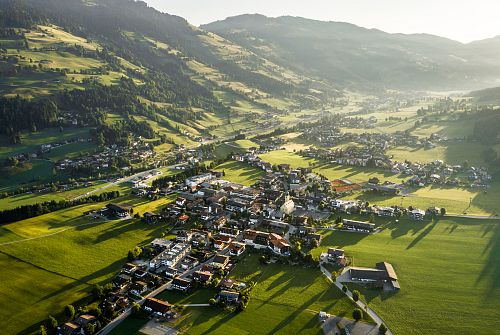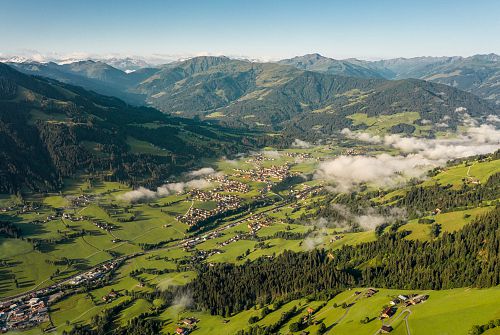Chronicle Westendorf
The history in brief
The first finds in Westendorf date back to the Bronze Age, with the unearthed cremation graves having been destroyed during construction of Bahnhofstrasse Street in 1926. The finds discovered back then are now housed in Ferdinandeum State Museum. The artefacts exhibit several special features: on the one hand there are a considerable amount of them, on the other hand some of the found objects are not made of bronze, which comes from Tirol.
In the Roman Age, Westendorf was part of Noricum province, with the village located right at the border. 476 this province was dissolved by Odoaker, surely resulting in many residents crossing over to neighbouring Raetia.
1234 Westendorf is first mentioned in documents, namely in a donation by Count Otto von Wasserburg to Rott monastery. There are several references to the village and church having existed even earlier:
902 nobleman Radolt transferred his property in Brixental Valley to the Bishop of Regensburg. In order to also assert their claim versus the Bishop of Brixen, it is assumed that the Regensburg bishops built a church in the area at Westendorf. Furthermore, the church is dedicated to St. Nikolaus, from which it can be deduced that it was constructed in the 11th/12th century.
At the 4th Lateran Council, the foundation of Chiemsee diocese was decided on in the year 1215. This new diocese was also awarded all of Brixental Valley, with the Bishop of Chiemsee having sovereign and ministerial power, the Archbishop of Salzburg, however, had the right of patronage and tithe. 1385 Brixental Valley as a result of a purchase agreement became part of the Archdiocese of Salzburg in full, but the ministerial right remained with Chiemsee diocese.
The St. Nikolaus church in Westendorf is mentioned in documents for the first time in 1320. The Gothic building was reconstructed in 1771 by Andre Huber.
Westendorf was under control of Itter court, to which Emperor Maximilian I. also assigned the high jurisdiction in 1514. In the 16th century, there was a mining boom around Westendorf.
1803 Salzburg archdiocese, as a result of the secularisation propagated by Napoleon, was awarded to the Grand Duchy of Tuscany and in 1805 to Austria. 1809 Salzburg as Tirol are taken over by Bavaria and again by Austria not before 1814.
On 1 May 1816 all of Brixental Valley following a decision by Emperor Kaiser Franz I. became part of Tirol, with Westendorf being elevated to an autonomous municipality in the same year.
Today, you can find farms with the name of “Burwegen” and “Burweg” at Westendorf. If you look at the map in this area, you’ll find a plateau surrounded by streams which thanks to its location lent itself to a fortress. If previously it was assumed that this was a prehistoric fortification, today it is believed that a mediaeval earthwork fortress with wooden parts stood in this spot. Unfortunately, neither wall remnants nor other finds were made in this area and no written sources for the fortification can be found, either.



